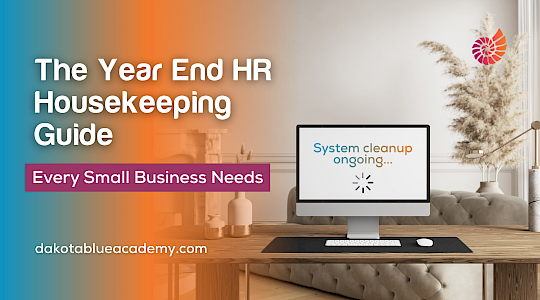
Someone’s Resigned. What Now?
29th July 2025
There’s nothing like starting your week with a resignation email. Whether you saw it coming or not, it hits hard, especially in a small team. You’re probably feeling a mix of emotions: surprise, stress, maybe even a little panic about how the work will get done.
Before you spiral, take a breath. You can handle this and you don’t have to wing it.
Here’s a step-by-step checklist to help you manage the process calmly, fairly and professionally… without losing sleep.
1. Acknowledge the Resignation (in Writing)
First things first, confirm you’ve received their resignation in writing and acknowledge it formally. It doesn’t need to be long, just a polite and clear:
- Thank you for your resignation letter dated (insert date)
- Confirm the details of their last working day based on their notice period
- Confirm the details of their final pay (including holiday over/under payments, loan repayments etc.)
- . Wish the all the best during this transition.”
This gives you both a clear record and sets the tone for a respectful departure.
2. Double-Check the Notice Period
Look at their contract. Are they on a one-week, four-week or longer notice? Don’t guess. get it right from the start to avoid disputes or confusion.
Also, think practically. Can they work their full notice? Do you want them to? Will they be using any holiday during this time?
3. Plan the Handover
The handover is gold. Don’t wait until their last day to start it.
Ask for a list of current responsibilities, ongoing tasks, contacts and systems access. Then decide who’s picking up what, even if it’s temporary. If no one knows what they do day-to-day, now’s the time to find out.
4. Do an Exit Interview
You don’t need a fancy process, just an honest conversation. Why are they leaving? What could have made them stay? What worked and what didn’t?
This isn’t about being defensive. It’s about learning and improving. You’ll often get insights you’d never hear while they were still on the team.
And even if the reason is completely unrelated to your business, showing that you care enough to ask leaves a good final impression.
5. Communicate with the Team
The worst thing you can do is leave everyone guessing. Let your team know what’s happening, what the plan is and most importantly, that everything is’s under control.
You don’t need to share the personal reasons for the departure, just keep it honest and professional. A little transparency goes a long way in keeping morale steady.
And don’t forget, losing a colleague can hit people harder than you think. Some might feel unsettled, sad or even anxious about how things will change. Acknowledge it. Be human. A simple “I know this might feel like a big change” can go a long way in making your team feel supported.
6. Remove Access and Update Systems
Create a list of every tool, platform and login they use. Don’t forget email, shared drives, client systems or even physical keys.
Plan when access should be removed, ideally at the end of their last day, unless there’s a reason to do it sooner. And if they’ve got a company laptop or phone, arrange to collect it before they leave.
7. Send Them Off Well
Even if it’s been a bumpy ride, part ways with kindness. Say thank you. Sign a card. Let the team say goodbye.
How someone leaves your company says just as much about your culture as how they join it does.
Need help managing it all?
We've got you covered with our Leaver’s Checklist, Guide to Managing Notice and a range of helpful templates for when an employee leaves, perfect for busy business owners who want to get it right without reinventing the wheel.
Download it now and save yourself hours of head-scratching.
A resignation might feel disruptive, but it doesn’t have to derail your team. With a clear plan, calm communication and a few smart tools, you can handle the exit professionally and maybe even learn something valuable from it.
You’ve got this.


